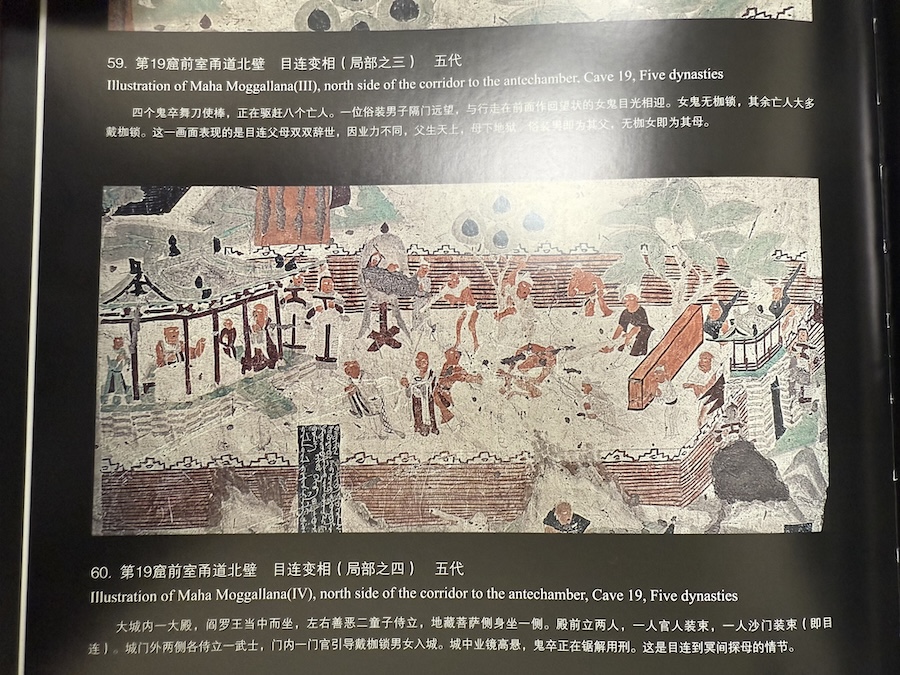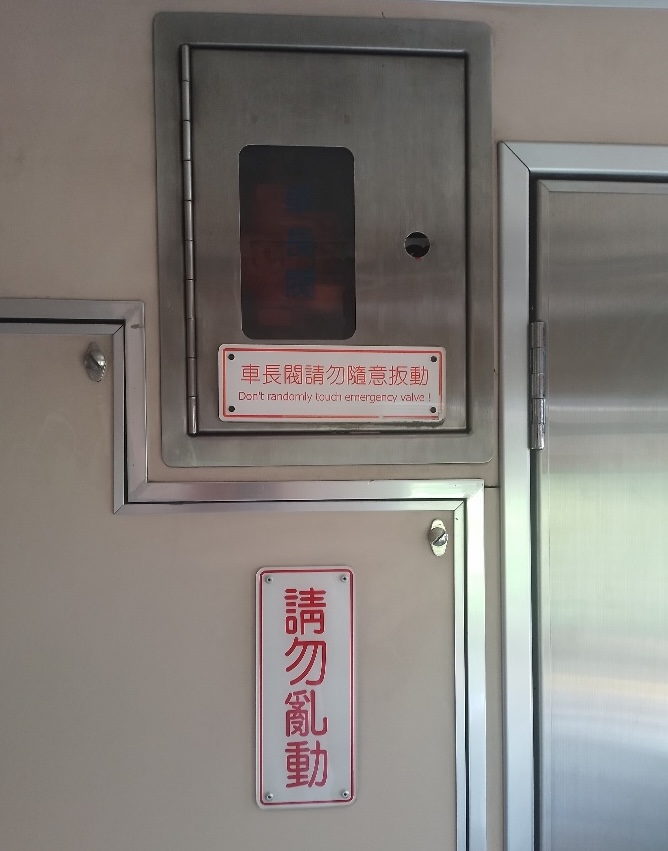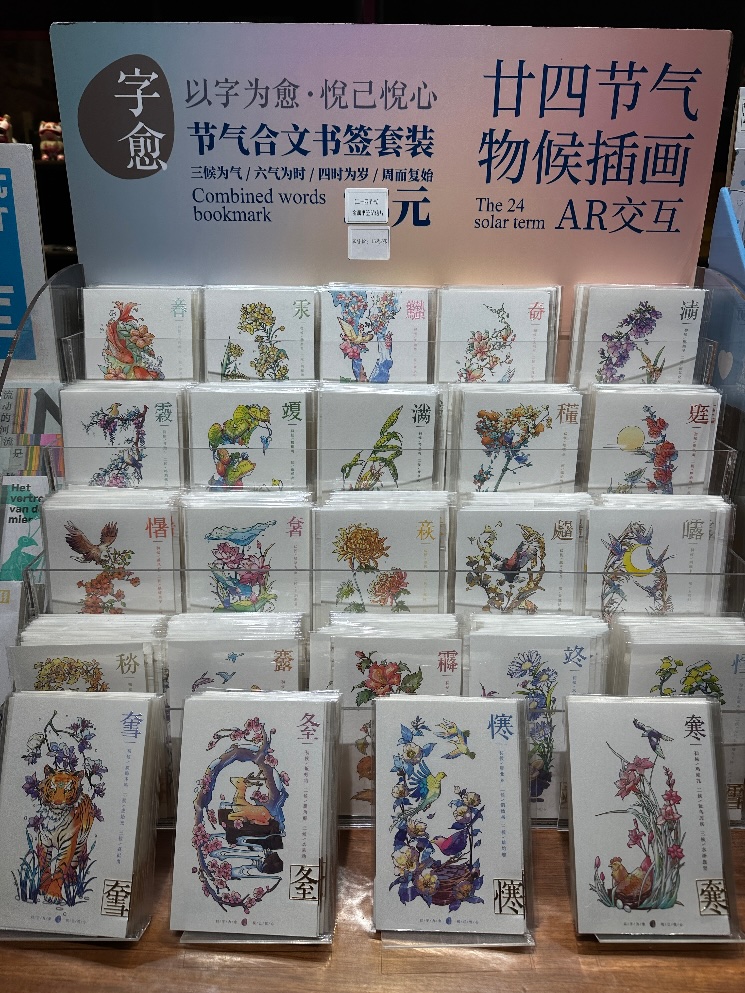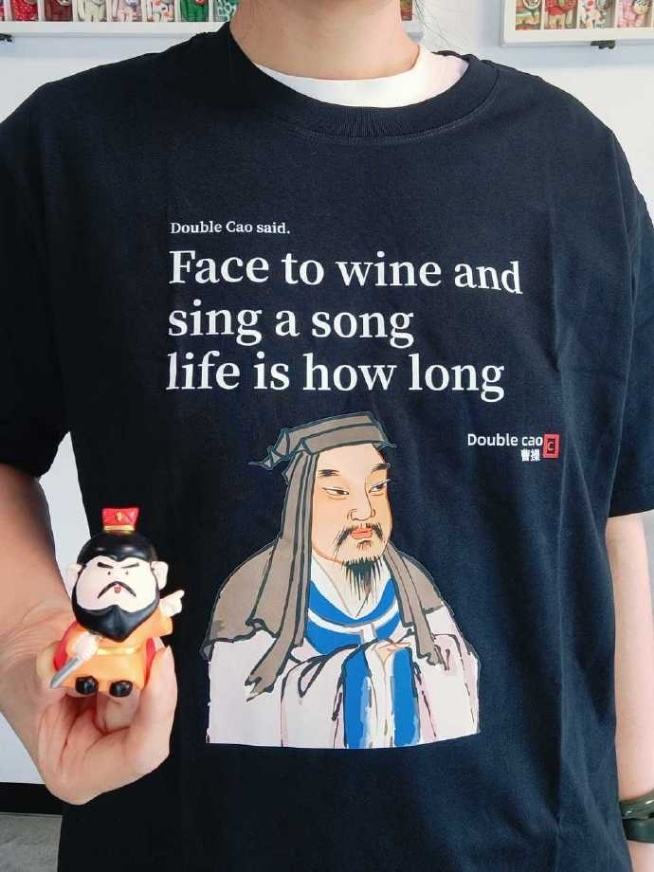A taste of Old Uyghur
It's not every day that you get a chance to experience Old Uyghur (language; script). Recently, when I was looking through albums of photographs of medieval Buddhist wall-paintings, I spotted an Old Uyghur inscription:
(click to embiggen)
That's from a Five Dynasties (907-979) transformation tableau (biànxiàng 變相) depicting the story of the Buddhist saint, Mahāmaudgalyāyana, rescuing his mother from hell. It is located on the north side of the corridor to the antechamber to Cave 19 at Yulin Grottoes toward the western extremity of Gansu Province, part of the larger complex of medieval Buddhist caves at Dunhuang, which we have often mentioned on Language Log. For the complete and heavily annotated translation of the transformation text on Mahāmaudgalyāyana (Mùlián 目連), see Victor H. Mair, Tun-huang Popular Narratives (Cambridge [Cambridgeshire] ; New York: Cambridge University Press, 1983).
Read the rest of this entry »
Boat shuttle
[This is a guest post by Elizabeth J. W. Barber]
A linguist friend specializing in Iranian linguistic reconstruction has a word that means weft, but also has something to do with a boat and weaving. To me, that immediately meant the "boat shuttle"–Gm. Schiffchen, Fr. navette, etc. Once the horizontal treadle loom was invented, the (flat, horizontal) shed could be opened wide enough that you could flick the weft bobbin all the way across the loom, catch it, change the shed, and shoot (shoot > shuttle) it back. HUGE time-saver!!!
The treadle loom seems to have been invented in China during the Han dynasties (206 BC-220 AD) — I can find no more than that. Don't know when some genius added the boat-shaped shuttle that floats the weft bobbin across the loom, riding atop the lower half of the warp.
Read the rest of this entry »
Little Models, Language and otherwise
The last couple of months have seen some interesting publications about AI systems that are small by modern standards.
Read the rest of this entry »
Forced toponym changes in Xinjiang
"China changed village names 'to erase Uyghur culture'", Anna Lamche, BBC (6/20/24)
I thought about this phenomenon again today, a year after that BBC article was published, because this morning Robert Thurman, the Columbia Tibetologist, told me about his concept of "ethnicide". This, forced name changes, is one way to do it.
China has changed the names of hundreds of villages in Xinjiang region in a move aimed at erasing Uyghur Muslim culture, Human Rights Watch (HRW) says.
According to a report by the group, hundreds of villages in Xinjiang with names related to the religion, history or culture of Uyghurs were replaced between 2009 and 2023.
Words such as "sultan" and "shrine" are disappearing from place names – to be replaced with terms such as "harmony" and "happiness", according to the research, which is based on China's own published data.
Read the rest of this entry »
Canonical circles

Mouseover title: "Achilles was a mighty warrior, but his Achilles' heel was his heel."
Read the rest of this entry »
Radio Garden, part 2
I don't know why, but the first time I came upon this marvelous site, in Mark's March 5, 2021 post, it didn't make much of an impression on me. Maybe I was too busy to explore it at that time or was just not in the right mood. Four days ago, however, when my old Peace Corps buddy, Bob Kambic, called it to my attention, Radio Garden just blew my mind away. I kept exclaiming, "This is the most exciting, happiest day of my life!"
Read the rest of this entry »
AMI not AGI?
From Yann LeCun's presentation at the AI, Science and Society event in Paris last February:
Read the rest of this entry »
Two new kinds of tea
Since I wrote The True History of Tea (2009; now available in a number of foreign languages and coming out in pb on 1/27/26), I've been a tea aficianado and connoisseur, so I was stunned when five days ago I learned of the existence of two types that are completely new to me.
The first is called Adeni tea, and I was privileged to taste it at Haraz Coffee House that recently opened next to Penn. It is run by Yemenis, who really know their coffee and serve mouth-watering pastries, many of which I had never encountered before.
I already had a good impression of Yemeni food purveyors when I stopped at a Country Market by the side of Old Route 30 in Svensen WA run by a mother and her son, though I didn't have any hot, freshly brewed tea that time.
Read the rest of this entry »
Don't randomly touch emergency valve!
A sign just outside the driver's cab of a TRA (Taiwan Rail) aging diesel on the Pingxi Line that climbs along the edge of the Keelung River ravine, just outside Taipei.
Read the rest of this entry »
Coined Chinese characters: The 24 solar terms
[This is a guest post by Diana Shuheng Zhang]
During my visit to the Luoyang Museum 洛阳博物馆, I found something amazing in its museum store. It is a set of 24 postcards, corresponding to the 24 solar terms 节气 (jieqi) in the traditional Chinese lunar calendar for agricultural purposes. What’s special about this set of cards is the design: every disyllabic lexeme for a solar term is coined into one single Sinitic “character”. I intended to attached multiple photos as examples but the last email was not successfully sent — the “size” was too big as an email. Therefore, here I’m only attaching one photo, that depicts the whole scene of the set of 24 cards. By clicking on the photograph, you will be able to enlarge it sufficiently to enable you to see the details of the artwork and the writing.
Read the rest of this entry »
Double Cao
On first blush, I thought perhaps the person pictured had a double chin, and by cropping the photo this way they were trying to hide it. On second blush, it was clear that they had misinterpreted the name of the famous 2nd c. statesman, general, and poet, Cao Cao 曹操 (ca. 155-220 AD).
Read the rest of this entry »
The true (sort of) story about VPNs in China
Most of the population of China cannot afford or obtain a VPN (Virtual Private Network). For the privileged portion who do manage to purchase and install a VPN, does that solve their global internet access problem?
Some people claim that, with a good VPN, you can see anything on the global internet in China. But I don't think that's quite true. Sometimes I direct my students (all of whom have VPNs) to various Wikipedia and Wiktionary articles, and they say, "Sorry, Prof. Mair, I can't access that in China" (blocked without warning or explanation twenty-some years ago*). The problem is even more acute with YouTube.
YouTube has all sorts of stuff: richly informative, inflammatory, educational, political, DIY, linguistic, etc., etc. Practically anything one can imagine, except probably outright pornography. The Chinese government is deathly afraid that its citizens might see YouTube content that is critical of Xi Jinping, the CCP, and so forth. So YouTube is a no-no, and that means nature films, music, poetry, art, archeology, chemistry, physics, recipes, Chinese / Japanese / Indian / Iranian / etc. culture. How impoverished the Chinese people are because of the benighted policies of their government! The nearly 15 BILLION videos on YouTube are off limits to Chinese citizens. And that's just YouTube. Think of all the internet riches that are unavailable to the people of China. No wonder so many of them are desperate to go abroad to study where they have free access to the internet.
Read the rest of this entry »




